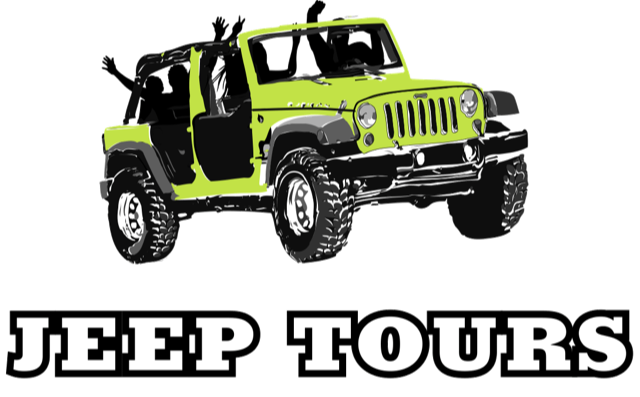CALL US! 1-415-766-2722
Fun@SanFranciscoJeepTours.com
Planning your San Francisco adventure? Riding a cable car is a must-do, but figuring out how to hop on like a local can be tricky. Don’t worry—we’ve got you covered! In this guide, we’ll show you exactly how to ride the cable car in San Francisco like a pro. From insider tips to avoid long lines to choosing the best routes with the most scenic views, this post is your ticket to a smooth, classic SF experience.
And if you want to take your sightseeing to the next level, pair your cable car ride with a San Francisco private tour in a comfy open-air Jeep—because the only thing better than a hilltop view is having a local guide to show you the hidden gems along the way.
Currently, they are running from 7am to 10:30 pm. The cable cars run about every 10 -12 minutes, on average.
The cost for all cable cars is the same $8.00 USD one way; whether you’re buying for a child, a teen, or an adult. There is, however, a senior/disabled or Medicare discount which reduces the cost to $4 USD, but it is only applicable before 7AM and after 9PM.
The ticket expires when you’re done with the one ride. San Francisco Cable Car tickets cannot be used to transfer to other public transit or for transferring between cable car lines.
The Visitor’s Passport is for 1, 3 or 7 days of consecutive travel and includes unlimited rides on Muni, Muni Metro, historic streetcars, and cable cars. But remember! The Visitor’s Passport expires at midnight, which is still a lot less annoying than buying transit tickets each day.
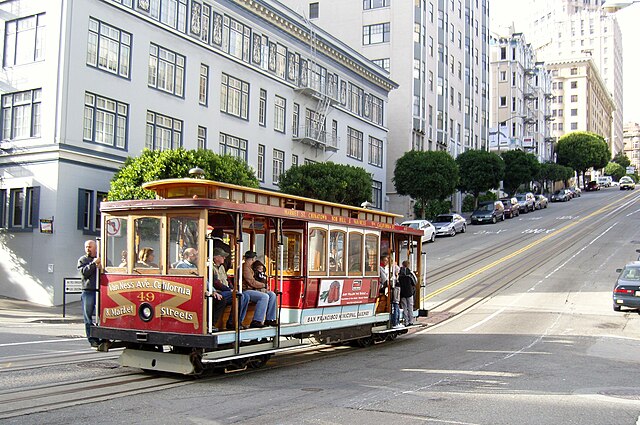
With Cash: If you’re carrying cash and paying on the cable car, you will have to have the exact amount of your ticket ($8) as the conductors are not able to give out change.
At Ticket Booths: At the start and end of the Powell-Mason and Powell-Hyde cable car routes, at the turntable, you’ll find ticket booths where you can buy a commemorative paper ticket and multi day passes. The California Line does not have ticket booths, so it is only cash or passes as you board. To board cable cars at the turntables at Powell & Market Streets, Bay & Taylor Streets and Hyde & Beach Streets, you must purchase your fare in advance (applies 8 a.m. to 8 p.m. daily).
Clipper Card: A Clipper card is an all-in-one transit card that is frequently used in San Francisco.
You can get a Clipper Card from retailers or self-serve machines. With your smartphone, you can also try the Clipper Card Mobile App and pay online.
The MuniMobile App: This app allows you to purchase and use tickets on your phone. You can also buy a Visitor’s Passport from this app.
The cable car doesn’t check tickets before you board. Instead, once you’ve boarded, a conductor (gripman) will approach you and collect your ticket or money for the ride.
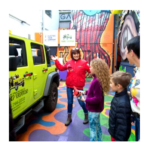 Experience San Francisco Like Never Before – Book Your Private Jeep Tour Now!
Experience San Francisco Like Never Before – Book Your Private Jeep Tour Now!See the city’s top sights on your terms with a Private Jeep Tour! Your personal guide takes you to San Francisco’s must-see locations, ensuring unforgettable views and photo stops—including a breathtaking drive across the Golden Gate Bridge.
Don’t just visit—experience San Francisco in style! Spots fill fast—Book your Jeep adventure today!
The San Francisco Cable Car has three routes that you can take: the Powell-Mason Line, the Powell-Hyde Line, and the California Line. All three routes will take you on a unique San Francisco tour, guaranteeing fun and a memorable adventure.
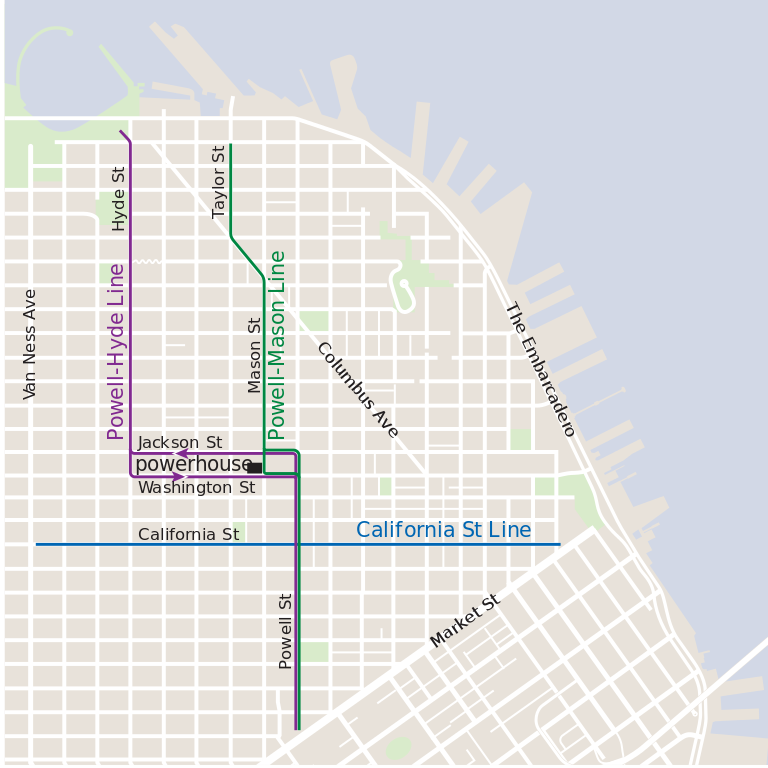
The Powell-Mason Line starts from Market Street at Powell Street and takes you to Taylor Street at Northpoint on the edge of Fisherman’s Wharf. The Powell-Mason Line passes through Union Square, then takes a turn from Woh Hei Yuen Park, catches Mason Street, and then continues straight through North Beach to Little Italy and then on to Fisherman’s Wharf. On this Line, you’ll get to travel through a few different neighborhoods and get gorgeous views of the Transamerica Pyramid and the city.
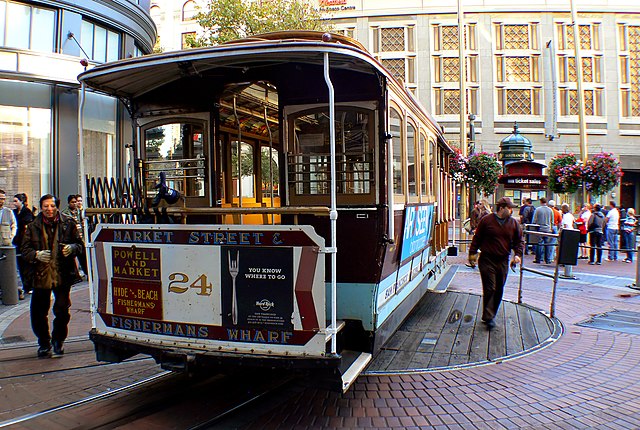
The city’s most popular cable car line. The Powell-Hyde Line also starts from Powell Street at Market Street and takes you to Hyde Street near the Maritime Park in Fisherman’s Wharf. This line takes part of the same route as the Powell-Mason line, but it turns onto Jackson Street and then joins Hyde Street after crossing the Jackson.
Since this line has more hills and iconic views of San Francisco, most locals will definitely recommend this line. Popular views and must-see spots along the route include Lombard Street, views of Alcatraz Island, the San Francisco Maritime Park and Hyde Street Pier at the end of the line.
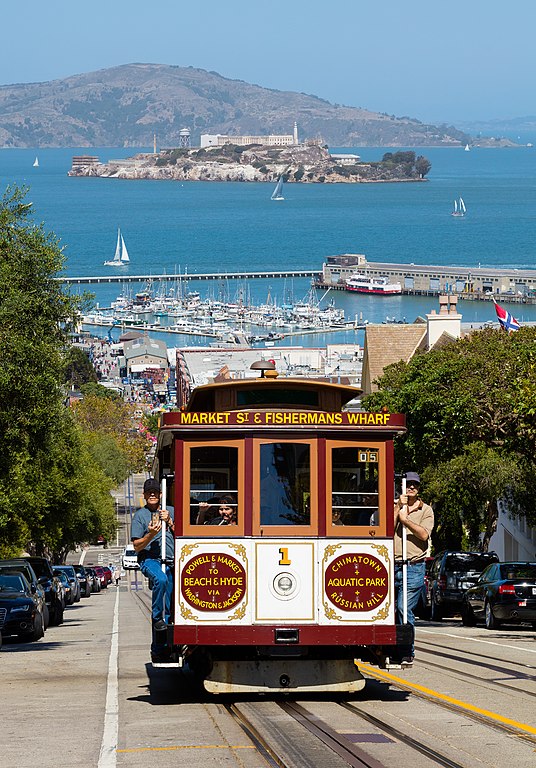
Starting from the Financial District, the California Line takes you on a shorter and more direct San Francisco tour of main exploring points in the Van Ness Avenue, including Grace Cathedral, Top of the Mark at InterContinental Mark Hopkins Hotel, and the Lumiere Theatre. This crosses Mason Street and does cover some areas of the Powell-Hyde and the Powell-Mason line.
There are a few tips you should know about San Francisco Cable Cars:
Not all routes go to/from Fisherman’s Wharf. Two routes start/end in Fisherman’s Wharf and Union Square. The California Line runs across the city in another direction from the Financial District to Van Ness Ave.
The best time to ride is the early morning or later in the evening, which equals the shortest lines to board. During the afternoons and early evenings, the lines can be quite long at the cable car turnarounds. The longest lines are at the two ends of the Powell-Hyde line.
While on board, be sure to hang on! While cable cars may look smooth, they do operate in regular vehicle traffic. There are occasional jolts or turns so keep a grip on the poles!
Have a chat with the Gripmen and the Brakemen: they are the professionals operating the cable car. They have a wealth of knowledge about the city and are unofficial ambassadors.
 Private Jeep Tour – The Most Fun Way to See San Francisco!
Private Jeep Tour – The Most Fun Way to See San Francisco!Make your visit unforgettable with a Private Jeep Tour that takes you to San Francisco’s top attractions in an open-air adventure. Ride with your own guide, cross the Golden Gate Bridge, stop at stunning viewpoints, and explore hidden gems along the way. Whether it’s your first visit or your tenth, this is the most exciting way to experience the city!
Don’t miss out on this top-rated experience!—Book your Jeep tour today!
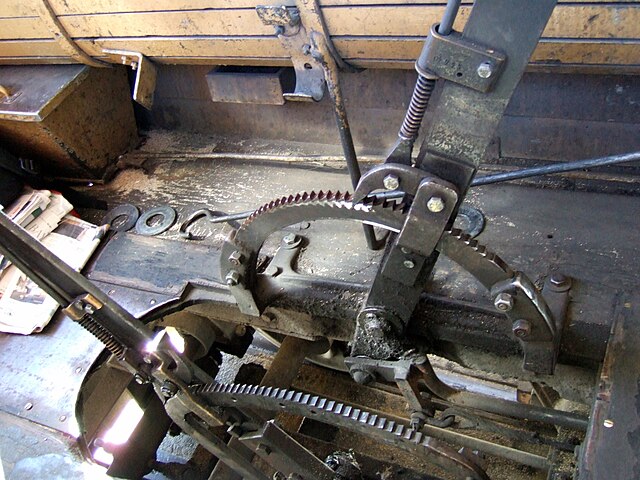
It’s not magic, it’s actually quite manual. The cable car is pulled on rails by latching onto a moving cable inside a channel beneath the street. The cable is guided by an intricate system of pulleys and sheaves (large pulleys). At the powerhouse, huge winding wheels driven by 510 horsepower electric motors pull cable loops at a constant speed of 9.5 miles per hour.
Through a slot in the street, the car grabs the cable with a big vice-like lever mechanism called a grip. To start the car, the gripman pulls back on the lever which closes the grip around the cable. To stop the car, the gripman releases the grip and applies the brakes.
Each cable car has 3 types of brake systems: the wheel brakes place pressure directly on the wheels with steel brake shoes, the track brakes are 2-foot-long pieces of Monterey pine mounted between each of the wheel sets that press down on the track, and the slot brake is an 18-inch steel wedge that gets jammed into the street slot to bring the car to a sudden stop (for emergencies only).
While cable cars are probably the best way to take a unique San Francisco tour, you can catch a glimpse of the city in other ways too. One activity you must try is taking an Open Top Jeep Tour of the city, which is conveniently located on Umbrella Alley, opposite the Powell-Hyde turnaround of Hyde Street. Taking a San Francisco Jeep Tour will be a thrilling way to explore the city and will have you gushing about it for days. If you want to see San Francisco, then a private group jeep tour is the way to go.
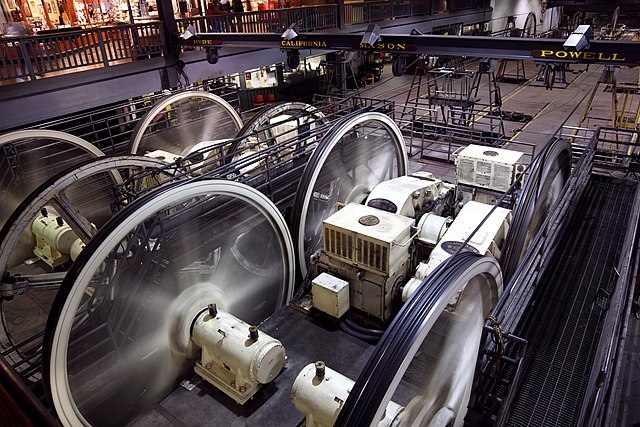
The Cable Car Museum was established in 1974. It is operated by the Friends of the Cable Car Museum as a nonprofit educational facility. Conveniently, both Powell Cable Car lines stop here.
Located in the historic Washington/Mason cable car barn and powerhouse, the museum deck overlooks the huge engines and giant 8” winding wheels that pull the cables under the streets of the city. Downstairs is a viewing area of the large sheaves (wheels) and cable lines entering the building through the channels under the streets. Four giant cables power the entire system.
On display are various mechanical devices such as grips, tracks, cables, brake mechanisms, detailed models, and historic photographs. The museum houses three antique cable cars from the 1870s. The Sutter Street Railway No. 46 grip car & No. 54 trailer are the only surviving cars from the first cable car company, as well as the Clay Street Hill Railroad No. 8 grip car. The museum store offers a variety of cable car memorabilia, books, clothing, cards, and even genuine cable car bells! Practice your bell ringing!
1201 Mason Street San Francisco, CA 94108
Open: Tuesday to Thursday 10AM to 4PM
Friday to Sunday OPEN 10AM to 5PM
Closed Monday Open every day except New Year’s Day, Thanksgiving and Christmas.
Admission is Free.
Now that you’re ready to ride San Francisco’s iconic cable cars like a true insider, why not keep the momentum going with a private small-group sightseeing tour in San Francisco? From the Painted Ladies to the Presidio, our Jeep tours cover it all—plus the flexibility to explore at your own pace with your favorite people. Skip the crowded buses and hop into a stylish open-air Jeep driven by a local expert.
Ready for your ultimate San Francisco experience? Book your private Jeep tour today and let the city unfold in the most unforgettable way!
Yes, in San Francisco, you can purchase a “Visitor Passport” which provides unlimited rides on the cable car, along with all other Muni transportation like buses and streetcars, for a set period (1, 3, or 7 days) making it essentially an “unlimited pass” for the cable car within that timeframe.
Key points about the cable car pass:
Can you take a cable car from Union Square to Fishermans Wharf?
Two of San Francisco’s three cable car lines connect the Union Square area downtown with Fisherman’s Wharf. The Powell-Mason and Powell-Hyde lines share the most-photographed cable car turntable, where Powell meets Market Street.
Not quite! San Francisco’s cable cars are pulled by underground cables, not engines or tracks alone. Think of it as a giant, vintage tow line running under the street.
How much does it cost to ride?
A one-way ride costs $8 per person. Yes, it’s a little pricier than the bus, but it’s a moving piece of history—and totally worth it!
Where do I hop on?
There are three main lines:
Powell-Hyde (ends at Hyde at Beach Street in Fisherman’s Wharf)
Powell-Mason (ends near Fisherman’s Wharf)
California (runs through the Financial District).
Just look for the turntables or cable car stops along the route.
Can I hang off the side like in the movies?
Absolutely! Standing on the running boards is half the fun—just hold on tight and mind the curves.
When’s the best time to ride?
Early mornings or later in the evening are your best bets to avoid long lines. Midday? Expect to wait, especially at popular spots like Powell and Market.
Are cable cars wheelchair accessible?
Unfortunately, no. The cable cars were built in the 1870s, so accessibility wasn’t part of the original design.
Do I need exact change for tickets?
Not anymore! You can pay with cash, a Clipper card, or even a smartphone app like MuniMobile.
What’s the difference between cable cars and streetcars?
Cable cars are pulled by underground cables, while streetcars (like the F-Line) run on electric power and tracks. Bonus: streetcars are cheaper at $2.50 per ride.
Do they run year-round?
Yep! Cable cars run every day from early morning until around midnight—rain or shine.
What makes them so special?
San Francisco’s cable cars are the world’s last manually operated system. They’re a National Historic Landmark, and riding one is like stepping back in time—plus, the views are unbeatable!
Got more questions? Just hop on and ask the gripman (the driver)! They’re full of fun facts.
